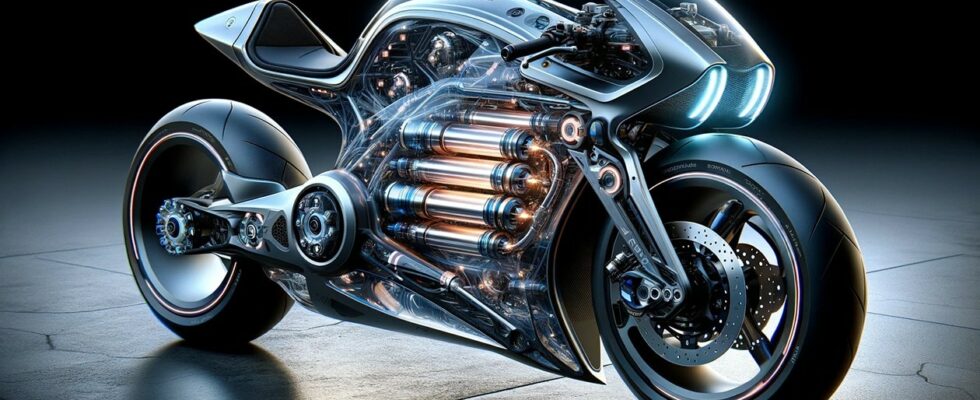A consortium of research institutions in Germany and the Czech Republic wants to develop an electrically powered motorcycle with a fuel cell power supply. According to those involved in the project, a demonstrator called a “Hydrocycle” will be created by the end of 2025 and will meet European approval standards and certification regulations.
The partners contribute to the project with different skills. The Czech Technical University (CVUT) specializes in motorcycle construction. In the Czech Republic, vehicle structure, ergonomics and placement of technology in the available space are being pushed forward accordingly. The German partners include WätaSwärmetauscher Sachsen GmbH, which is developing a new generation of fuel cell stacks. The Chemnitz research institute takes over the dimensioning and packaging of the system. Finally, the Fraunhofer IWU in Chemnitz acts as an interface between vehicle and fuel cell development and supports the development of new manufacturing techniques and the optimization of the stack. And how is that supposed to work? How the whole thing is supposed to be implemented specifically or where the space for the fuel cell and hydrogen tank will be found is not yet known. Hydrogen propulsion takes up a relatively large amount of space. This is clear from current cars such as the second generation Toyota Mirai: It is around five meters long, but only offers the same amount of space as a small car. The technology currently seems to make sense for heavy trucks and buses. Recently, a prototype of the Mercedes-Benz GenH2 Truck – a semi-trailer truck – approved for public road traffic, covered a distance of 1,047 km on one tank of liquid hydrogen. Solution to the range problem? Electric motorcycles that run on electricity from a fuel cell are supposed to be emission-free and thus allow climate-friendly use with a high range at the same time. Short ranges are a key problem with the numerous motorcycles with battery-electric drive systems already available on the market. However, the prerequisite for the most environmentally friendly operation of a hydrogen motorcycle is the use of green hydrogen. The Hydrocycle project is intended to contribute to the European Union’s hydrogen strategy. From 2030 onwards, the EU guidelines call for hydrogen from renewable energies to play a key role in the transport sector so that the Union becomes climate neutral by 2050. (SPX)
source site-13
